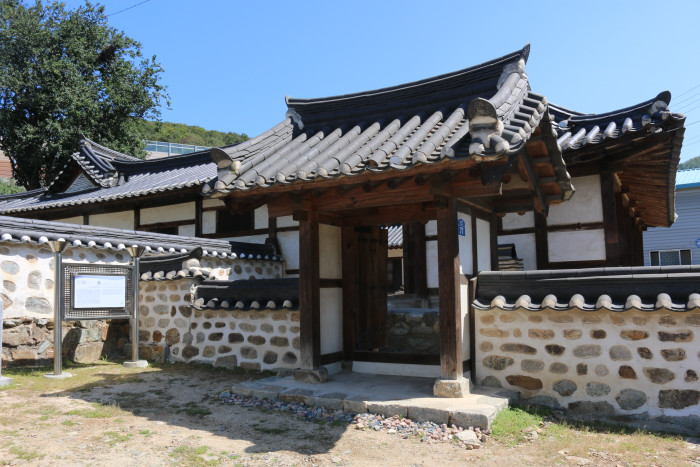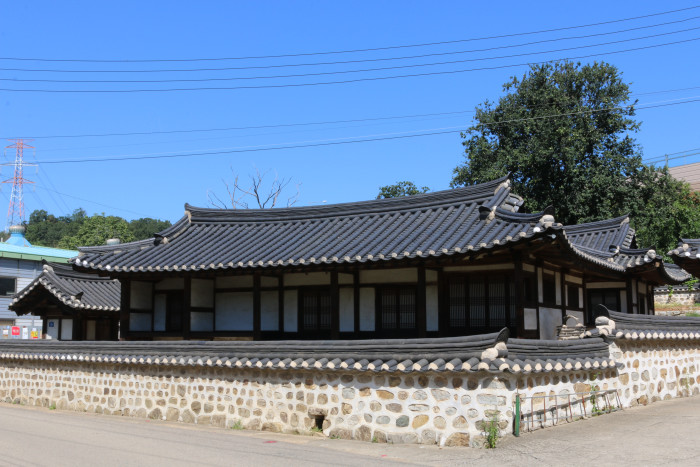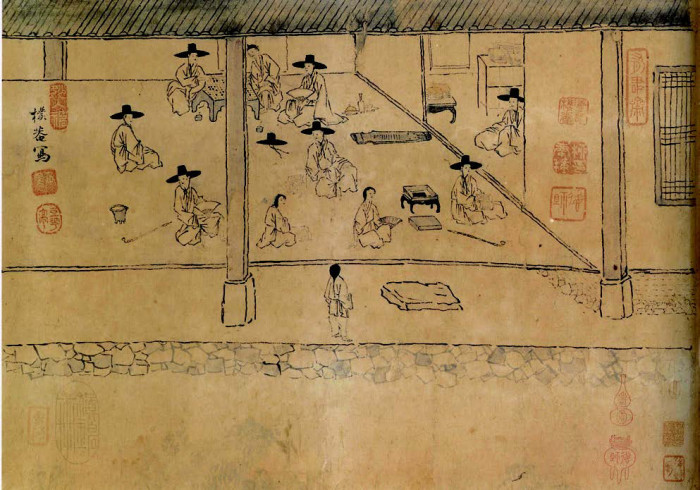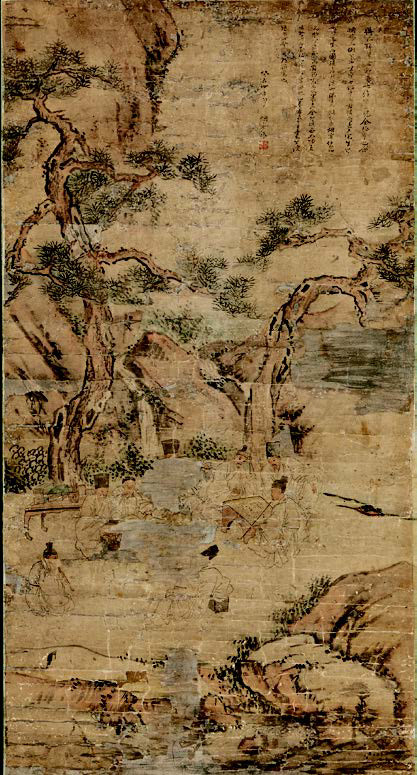경기문화재단
Ansan_Cheongmundang House
House where renowned artists of the 18th century Joseon enjoyed elegant entertainment
House where renowned artists of the 18th century Joseon enjoyed
elegant entertainment and cooled off in the summer
On Chobok (first of the three canicular days) in 1747, Yu Gyeong-jong, a noble man of the Joseon Dynasty, invited his friends to Cheongmundang House, a study hall of the Head House of the Jinju Yu Clan. Gang Se-hwang (1713-1791), who was a 35-year old painter at the time, portrayed this day's party in the picture titled Hyeonjeongseungjipdo. Wearing a dopo (overcoat) and gat (hat made of bamboo and horsehair), the typical attire of male aristocrats of Joseon, they enjoyed dog meat, and Gang played the geomungo for his friends. The theater company EU staged a performance that reproduced this Ahoe (a gathering of decent men) held at Cheongmundang House on 1747's Chobok in 2015 and 2017.

Cheongmundang House, where the nobles and artists of the Joseon dynasty enjoyed entertainment, remains in the same place, looking just the same as it did those days. The house was built on land presented to Yu Si-hoe (1562-1635), the head of the 16th generation of the Jinju Yu Clan, by King Seonjo. This was one of Mangwondang, a house with 10,000 books, which was then a symbol of wealth and power. It might of been a gathering place of all the writers and artists in the Ansan area during those days. Gang Se-hwang (pen-name: Pyoam) was the son-in-law of the family. He taught painting to Kim Hong-do (pen-name: Danwon), a genius painter of Joseon, in an octagonal pavilion in the inner quarter of Cheongmundang House.
If you visit the house with this historical background in mind, you may feel a certain bitterness. Now the Yeongdong Expressway and the Seohaean Expressway pass in front and the back of the house, and small and large factories stand around it. The driveway to the house is at a secluded spot so, you cannot find it easily. The inside of the house is kept clean, but while listening to the noises around you, you will feel sorry about how hard it has struggled to survive.
In the backyard of the house, a 250-year quince tree still bears fruit every year even after being hit by lightning. I wish that Cheongmundang House will also live as long as the tree.



△ Gang Se-hwang, Hyeonjeongseungjipdo (part), 1747 △ Gang Se-hwang, Kim Hong-do and others,
Gyunwa ajipdo (part), 1763
● Gang Se-hwang and Kim Hong-do had an intimate mentor-student relationship. Gang taught painting to Kim since he was a child and until he turned 19 in Ansan. Gang interacted with many people regardless of their social status from aristocrats to the middle class and boldly accepted the techniques of Western painting. The most appreciated painter by Gang, who was a calligrapher/painter and critic of art with a high reputation at the time, was Kim, his student. He praised him, "Kim made achievements that no one could accomplish during the four hundred years of Joseon's history."
● The late Joseon era which spanned the 17th and 18th centuries saw great academic development and the prosperity of arts. Ansan was one of the places where renowned scholars and artists were based. Gang Se-hwang, Sim Sa-jeong, Choe Buk, Heo Pil, and Kim Hong-do, who were the masters of poetry, calligraphy and painting at that time, gathered in Ansan and spent their leisure time together. Gyunwa ajipdo created in 1763 is their collaborative work. Gang composed the painting, while Sim and Kim sketched the pine trees and stones, respectively. The characters were drawn by Kim and Choe colored the picture, which was completed by Heo's epilogue on a corner. Danwon Art Museum has held the permanent exhibition Ansan Ahoe which introduces the various aspects of painters and literati who enjoyed arts and life in Ansan.
<ggc의 모든 콘텐츠는 저작권법의 보호를 받습니다.>
세부정보
Cheongmundang House
ADDRESS/ 77, Cheonggok-gil, Sangnok-gu, Ansan-si, Gyeonggi-do
Tel./ 031-481-3437 (Ansan City Culture and Art Division Cultural Facility Department)
OPEN/ 10:00-15:00